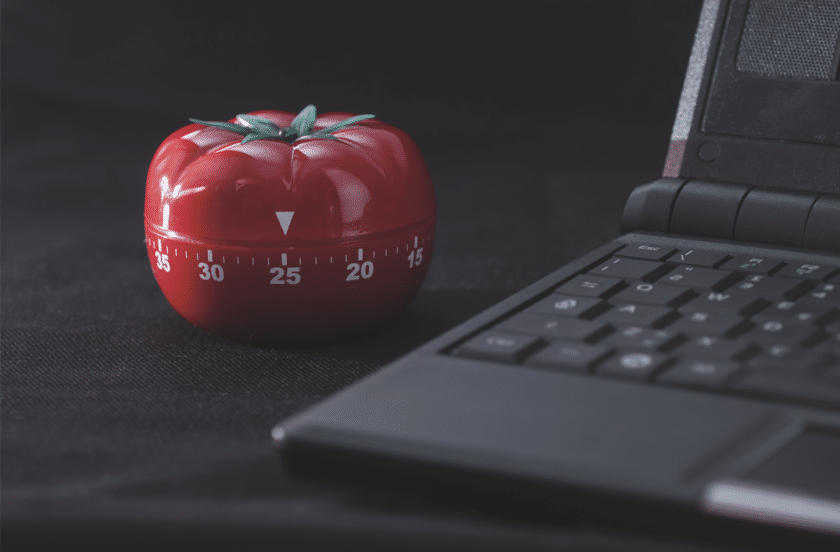Looking to improve your productivity and squeeze more into your working day? Richard Cooper, business development manager at The London Institute of Banking & Finance, provides some tips and tricks like, well, eating frogs and tomatoes…
Paraplanners are busy people. We all have the same number of hours in a day – and not all of them are for working. So why does it seem that some paraplanners can get more out of every minute?
Maybe they’re using some tips and tools to manage their time. Perhaps they’re better at avoiding time stealers and distractions, because they aren’t working such long hours.
I thought it would be useful to share a few of these tips and tools with you to help you make the most of each working day.
Eat the biggest frog first
Mark Twain once said, “If it’s your job to eat a frog, it’s best to do it first thing in the morning. And if it’s your job to eat two frogs, it’s best to eat the biggest one first.”
The point he was making is that should take care your biggest and most-challenging tasks first thing in the morning, because:
• you usually have more energy in the morning and are more focused
• if you start your day by accomplishing something, it will give you a boost to help you get through the rest of the day’s tasks.
Create a time audit
If you’re serious about improving your time management, the first step is finding out where your time actually goes.
A lot of apps can support you with this – many of which are free like Clockify or have free trials like RescueTime or Harvest. You can use these to track everything you do for a week. Then you’ll get a report which shows what’s stealing your time. That information will help you adjust how you work.
Get into the planning habit
One of the worst things that you can do is wake up without a plan for the day. Get into the planning habit by either:
• spending the last 15 minutes of each working day organising your office and composing a list of your most important tasks for tomorrow, or
• starting each morning by writing down three or four of the most urgent and important things you need to address that day and working on those while you’re most productive.
Use a to-do list or task planner
Having a properly structured and thought out list seems logical and simple enough but it’s surprising how many of us fail to use them effectively or not all.
There are some great apps and tools available that link to diaries, such as Todoist and Remember the Milk. You may find using your Outlook Task Manager or Gmail Tasks effective. Or you may prefer a written list or simple spreadsheet that you can filter.
Whatever your preference, a good to-do list will usually include:
• the list of tasks to be undertaken
• complex tasks will be broken down into manageable mini tasks
• a good prioritisation of tasks from important at the top and least important at the bottom
• the deadline for any task
• the potential time it may take to complete.
Reviewing and updating your to-do regularly is key.
Eliminate distractions
We live in a world of constant distractions. We’re all trying to balance the demands of messages, emails, social media, phone calls and to-do lists with the tasks at hand. Many paraplanners have multi screens and it’s easy to get pulled away by things that ping or ring.
When working on the important tasks you can manage this by:
• putting the out of office on emails for an hour or two
• turning your phone to silent or switching it off altogether and leaving an answerphone message to say you’re not available until later
• marking your calendar or Teams as ‘busy’ or ‘out of office’
• turning off notifications on your computer.
Remember: you’re in control of your time and you can manage it by allocating a time for checking and responding to emails and messages. Put this in your diary.
What is the tomato technique?
If you’re one of the many paraplanners who want to advance your career and increase your knowledge by studying for a qualification, you might try using the tomato technique.
Also known as the pomodoro technique, it’s a popular time management tool that breaks your work time into blocks of 25 minutes for maximum focus and productivity – allowing five minute breaks between sessions.
This 25-minute timer technique was invented by Francesco Cirillo in the late 1980s and inspired by the tomato-shaped kitchen alarm that Francesco used to time himself. It’s an effective time management tool that facilitates concentration and reduces distraction. There are five steps:
• Step 1: categorise the work or study tasks and work out how long you need for each one
• Step 2: set a timer for 25 minutes
• Step 3: focus and work only on the task in hand until the alarm goes off
• Step 4: take a five-minute break
• Step 5: after every four tomatoes or sessions, ie, every two hours, take a 20-minute break.
Simply repeat the steps until you have achieved all your tasks or the element of study you wanted to complete. It sounds simple and it is. This technique not only ensures you complete your goals but also helps you maintain your focus because of the short and longer breaks you take.
Mix and match the techniques to suit yourself
Some of these techniques may appeal to you more than others. You may be already using others or find that combining say ‘eliminating distractions’ with the ‘tomato’ technique suits your way of working and your schedule.
If you are struggling to fit your work into the hours of a working day, then I would recommend trying a few of these techniques to see if they work for you. Paraplanning requires focus and attention to detail, so managing your time more effectively will always help – no matter what the day throws at you.
This article was first published in the February 2022 issue of Professional Paraplanner.































